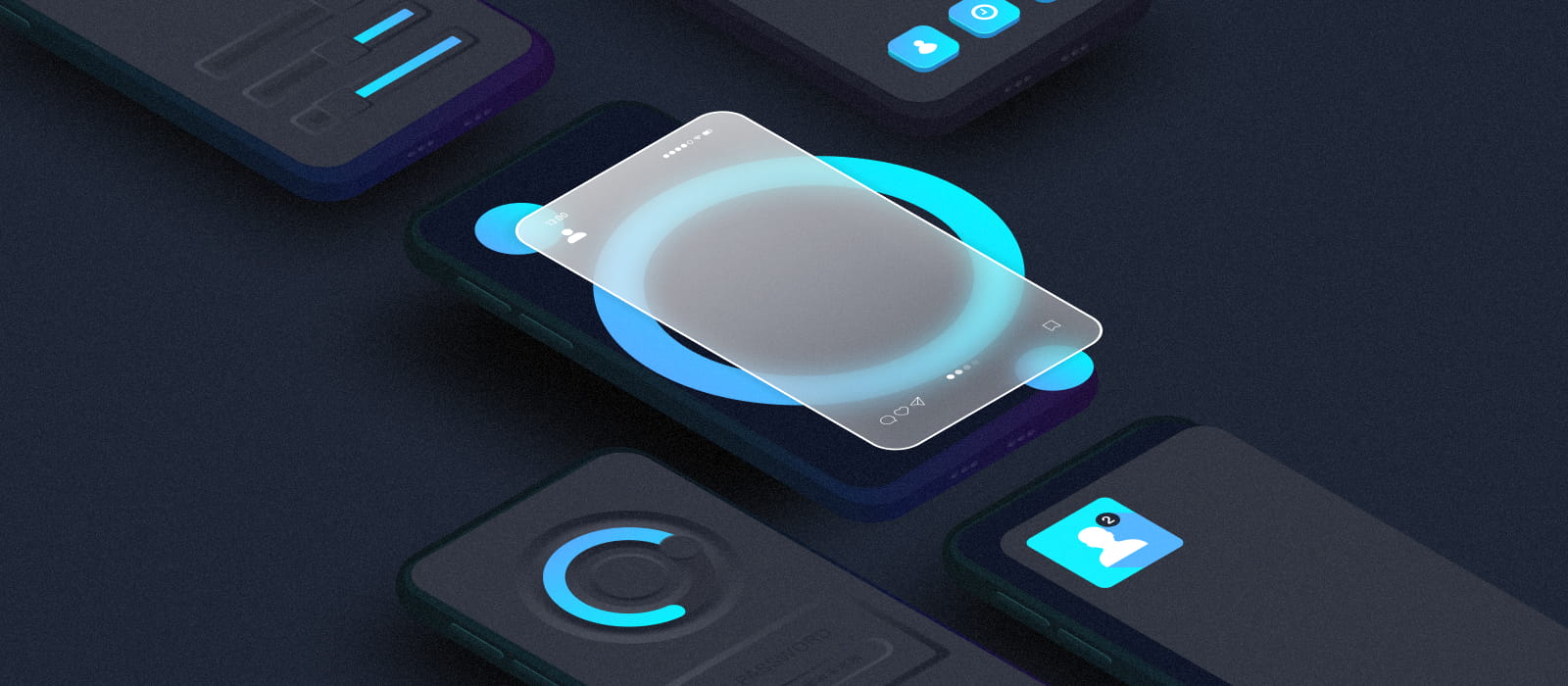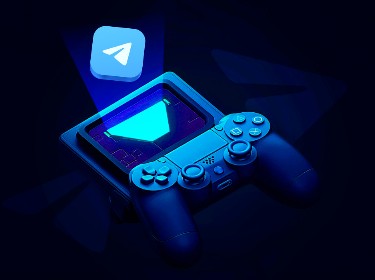An eye-catching and intuitive design is one of the key success drivers of your website or application. As the audience's tastes and preferences continually evolve, staying updated with the latest UI/UX trends is crucial to remain relevant.
They say “Don’t judge a book by its cover,” but in the case of user interfaces “the cover” is essential since it significantly impacts user comfort and engagement.
With globally increasing screen time and lots of daily activities, from entertainment to paying bills, being transferred online, users demand seamless and visually pleasing experiences.
To stay relevant and meet user expectations, modern UI/UX designs should go beyond considering artistic fundamentals like composition, perspective, and color theory. They should also take into account aspects such as color psychology, symbolism, and accessibility basics. By incorporating these elements, designers can create more impactful and user-friendly experiences that resonate with a broader audience.
In this article, we will explore the most popular UI/UX trends of 2025 and provide you with a list of tips for creating an outstanding interface design, shared by our awesome UI/UX design team.
What are the current UI/UX trends?
There is a real abundance of fascinating UI/UX design styles and approaches, ranging from minimalist to intricate and highly-detailed ones.
Here is an overview of the 15 most popular UI/UX trends you should consider when designing your website or application.
![]()
1. Skeuomorphism
The distinctive feature of skeuomorphism is the high resemblance of interface elements to their real-world counterparts. To achieve this similarity, UI/UX designers include lots of details, create realistic textures, and add shadows.
Skeuomorphism was very widespread during the early days of digital interfaces and is now regaining its popularity due to the development of AR/VR technologies.
2. Glassmorphism
Another UI/UX trend whose popularity is driven by AR/VR is glassmorphism. You can instantly recognize this style by the glass-like appearance of buttons, cards, and containers.
The glass-like effect is achieved by soft and pastel colors palette combined with the imitation of illumination and shading. This effect adds depth and dimension to the design, allowing users to see through the elements while ensuring readability and contrast with the content.
3. Minimalism
Minimalism consistently ranks among the top UI/UX trends, remaining an all-time classic.
It allows designers to achieve a clean and uncluttered user interface by removing unnecessary elements and focusing on the essential features. Solutions with minimalistic UI are easy to navigate and allow users to accomplish tasks efficiently without distractions.
However, in 2025, UI/UX minimalism aims to achieve greater individuality with the use of bright colors, bold fonts, custom graphics, and the integration of brand mascots.
As mobile devices continue to dominate the digital landscape, the relevance and effectiveness of minimalism in UI/UX design are expected to remain steady. This style allows designers to make the most out of limited screen space and optimize the user experience.
4. Flat design
Flat UI/UX design style is characterized by its simplicity and lack of three-dimensional elements or effects. It focuses on clean and straightforward visuals, using flat shapes, bright colors, and sharp typography.
The goal of flat design is to create a user interface that is easy to navigate, visually appealing, and efficiently optimized for various devices. And one more substantial benefit of flat design is fast loading times and overall performance, achieved through few or no complex elements.
5. Neumorphism
Neumorphism is a mix of skeuomorphism and flat design that allows for the creation of a visually striking and immersive user interface. This design style incorporates gentle shadows and highlights, giving the interface elements a slight elevation from the background and achieving a soft 3D-like effect.
Neumorphism aims to evoke a sense of physical tactility, making users feel as if they can interact with the interface elements as physical objects while avoiding an overly realistic appearance.
6. AR/VR elements
Augmented and virtual reality elements are becoming more common in user interfaces — all thanks to VR headsets advancement.
By adding augmented or immersive elements, such as animations and micro-interactions, UI/UX designers enable users to deeper engage with their digital products, resulting in a delightful and satisfying experience. This, in turn, leads to higher user retention and increased loyalty.
Check out our detailed overview of Apple Vision Pro — a VR headset promising exceptional mixed-reality experiences
7. Motion design
Motion design makes it possible to breathe life into user interfaces and make them more spectacular via animations, transitions, and dynamic elements.
There are various user actions you can enhance with motion design elements. For example, you can add loading animations to make waiting times fun rather than irritating or create onboarding animations to ensure a smooth start of the user journey.
Microinteractions provide users with instant feedback and visual cues, encouraging users to explore and interact with the solution further.
8. Scrollytelling
One of the most impressive UI/UX trends is scrollytelling. This design approach leverages scroll-based visuals, animations, and content to create storytelling experiences.
Scrollytelling allows designers to guide users through a dynamic and captivating journey, offering a unique and memorable way to present information and convey messages. This technique combines the power of storytelling with the interactivity of scrolling, creating an immersive and entertaining user experience.
9. Emotional design
Emotional UI/UX design recognizes the power of human emotions in decision-making and user engagement and aims to evoke positive emotional responses from users. It is achieved by using visually appealing elements, such as beautiful graphics, engaging illustrations, and attractive color schemes.
In addition, the design elements convey the brand’s personality to establish an emotional connection between users and the brand and foster loyalty.
10. Gradient
Gradient is definitely one of the most popular UI/UX trends in 2025. Gradients are made by blending two or more colors to create a smooth transition.
Gradients are especially wide-spread in flat and minimalistic user interfaces since they add depth and dimension to design elements, making the interface feel more vibrant. This technique is also used to establish a visual hierarchy and draw users’ attention to important interface elements.
Furthermore, gradients allow designers to experiment with different color combinations to evoke specific moods or emotions.
11. Buttonless UI
Buttonless user interfaces replace or minimize traditional buttons and allow users to interact with solutions by tapping, sliding, and swiping. A good example is the iPhone’s control center where users can adjust volume and brightness by just sliding the bars.
12. Voice user interface
Another way of avoiding using buttons is the implementation of a voice user interface (VUI).
VUIs use natural language processing (NLP) to interpret and process users’ speech, allowing for hands-free interaction with applications.
By removing the need for physical touch or visual attention, this technology enhances the user experience, particularly benefiting individuals with impairments and those in situations where hands are busy or the screen cannot be seen. A trusted machine learning consulting company will help implement this technology into your solution.
13. Light mode/dark mode
Digital solutions gain huge plus points from users if they provide the possibility to choose between light and dark modes. This way, users can select the mode that best suits their comfort and readability, especially in different lighting environments.
For example, dark mode is often used in low-light or nighttime conditions as it reduces glare and eye strain. Plus, it is also more energy-efficient and thus important in case the user’s device battery is running low.
In the meantime, light mode can be more preferable for people with visual impairments, such as low vision, astigmatism, or certain types of color blindness.
Meet AIRA — an AI-powered retina analyzing and disease diagnosis solution
14. Password-free login
We bet many of us can relate to the frustration of forgetting passwords and searching through notes, hoping that our past selves were wise enough to write it down somewhere.
Luckily, modern UI/UX designs tackle the problem by allowing password-free login. Now users can access their accounts or digital services via alternative authentication methods, including fingerprint recognition, facial recognition, email or SMS authentication, etc.
15. Accessibility
Accessibility is one of the most important UI/UX trends, evolving from being considered an option to an absolute necessity. It refers to the creation of inclusive digital interfaces, usable by all individuals, including those with disabilities or impairments. The goal of accessibility is to ensure that everyone, regardless of their abilities, can access, understand, and interact with digital products and services effectively and independently.
Specifically, UI/UX designers should ensure that interfaces are compatible with screen readers, allowing visually impaired users to access and interact with content through audio output. Moreover, all images should have descriptive alternative text, enabling screen readers to convey their content to visually impaired users.
Seamless keyboard navigation is also of high importance, ensuring that users can access all interactive elements without relying solely on a mouse or touch screen. Plus, users should be able to adjust text sizes to their preferences without distorting the overall design and layout.
Ensure high accessibility of your solutions with our ADA-compliant web design and development
Our 6 tips for creating a great UI/UX design
![]()
Over the years of delivering exceptional user interfaces, our designers came up with a list of must-does for crafting UI/UX that captivates users. Now, they are eager to share their valuable expertise with you, providing you with the six most vital tips for crafting great UI/UX.
1. Get to know your users
You should understand your users’ preferences, expectations, and pain points to deliver the UI/UX that perfectly meets their needs. So, before starting the actual designing process, we strongly recommend you to do research on your intended audience and find out such vital aspects as:
- Demographics
- Goals and objectives
- Technological proficiency
- Content preferences
- Cultural background
- Things they like and dislike in similar products
- Accessibility requirements
2. Prioritize intuitive user experience
Your user interface may be a real masterpiece, yet no one will truly appreciate it if it doesn’t make the user journey smooth and effortless. We do not say that keeping to minimalism is the only good option, you have a bunch of styles to choose from. What really matters is how skillfully you integrate the chosen UI/UX trends to create a cohesive and user-centered design that aligns with your product’s objectives and resonates with your target audience.
Finding the balance between modern trends and functional usability is key to delivering an exceptional user experience that truly stands out while being comfortable for users.
To make sure you’ve achieved that balance, it is useful to map out the typical user journey from the moment they engage in your product until they accomplish their goals. This way you will double-check that all actions and steps are intuitively understandable, even for less experienced users.
3. Maintain consistency
Your UI/UX definitely should not be an almanac of different design styles and approaches. If done professionally, a style mix can be great in some cases but you should still be consistent with colors, typography, and layout across all elements to create a harmonious user experience.
4. Remember about text and sounds
UI/UX design is not about visuals only, text and sound effects also immensely contribute to the perception of a solution. Thoughtful and well-crafted text can guide users through the interface, provide clarity, and establish a brand voice that resonates with the audience. It’s essential to consider the tone, language, and readability of the text to ensure it complements the visual elements and enhances the overall design.
Sound effects are vital as well. Whether it’s a soft click sound when pressing a button or a satisfying chime to signal a successful operation, deliberately chosen sound effects can enhance engagement and bring an extra touch of delight.
5. Ensure seamless adaptivity
Your users will be definitely accessing your website or application from various devices and platforms, so making your UI/UX design adaptive is a must. Don’t forget to ensure that all screens and elements perfectly adjust to various screen sizes and orientations to provide users with an optimal viewing experience.
6. Accept the ongoing flow of UI/UX design
Making changes to your carefully honed design may seem unnecessary and irritating. However, you need to remember that there is always room for improvement. So, to maintain the excellence of your UI/UX design, it is crucial to do regular reviews and gather user feedback. This will enable you to adapt your design and ensure a delightful experience for your users.
PixelPlex UI/UX proficiency: Web3 Antivirus
Our design team delivered an attractive and user-friendly UI/UX for Web3 Antivirus (W3A). It is a browser extension that protects users from web3-specific dangers and scams, such as malicious smart contracts, phishing, honeypots, and many more.
To ensure the design meets the needs of the target users and is comfortable to navigate, we’ve done an in-depth analysis of user preferences, behavior, and similar products on the market.
As a result, the designers got a well-defined vision for a perfect W3A interface and began turning it into reality.
The solution has multiple features and metrics, such as transaction simulation, technical risks, suspicious activity, and vulnerable code detectors, so our top priority was to ensure trouble-free usability and a seamless user experience. To achieve this, our UI/UX designers opted for a minimalistic interface, making sure that all elements and sections are distinct and easily recognizable.
For example, we implemented color-coded W3A risk reports, with high risks being indicated by red, medium by yellow, and low by green. This way, users can immediately gauge the level of danger even before delving into the warnings.
In addition, we provided tooltips for all the metrics and warnings to make sure users fully understand the meaning of each parameter and the potential risks associated with various scams or suspicious transactions. This way, W3A users can make informed decisions and be fully aware of the transactions they choose to engage in.
Now there are more than ten thousand people under Web3 Antivirus protection — a remarkable achievement hardly possible without the high expertise of the PixelPlex UI/UX team.
Get acquainted with our overview of the top 5 web3 security tools and gain insights into how they can strengthen the safety of your assets
Conclusion
It is very important to carefully consider the appearance of your digital solution since it is the first aspect your potential customers will pay attention to. A well-crafted UI/UX design fosters positive perceptions, builds trust, and encourages users to explore further, ultimately increasing chances of converting them into loyal clients.
Investment in the visual aspects of your digital solution is an investment in the success and growth of your business in the digital era.
Our creative designers will be happy to deliver more eye-catching and user-centric interfaces, so feel free to contact us, and let’s discuss your vision.




